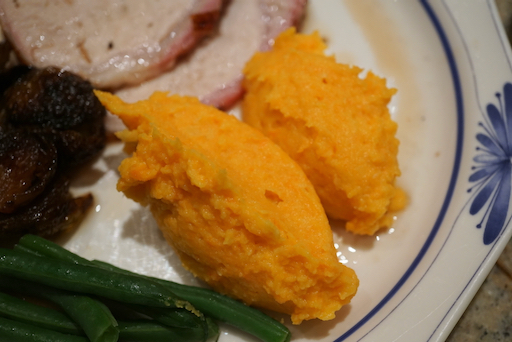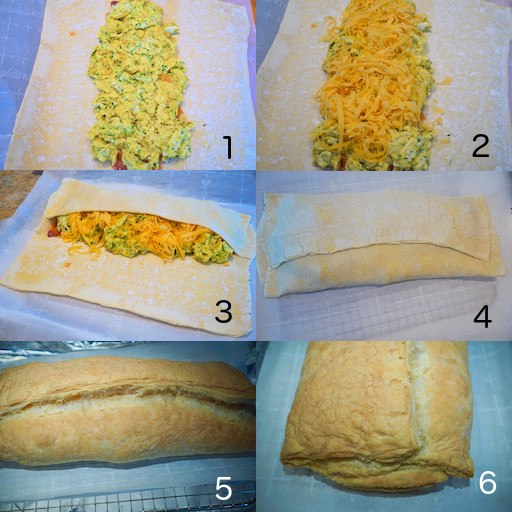The largest mouse appears to be dressed in ”Kannushi" 神主 shinto priest attire. I am not sure what the smaller one is up to. It seems to be carrying a pouch and has on a backpack. (On closer inspection, this guy appears to be carrying a "Kome-dawara" 米俵; a traditional old fashioned woven-straw sac containing rice, no doubt a symbol of prosperity). It's cute.
We also displayed a small carved wooden mouse figure shown below which was not as anthropomorphized as the other two--he just looks cutely "mouse-ish".
Since we cannot start the day, even the first day of the year, without coffee, we gave up having a new year's "ozoni soup" お雑煮 for breakfast, instead, we had "ozoni" soup as a lunch as shown below. Not shown below, it was accompanied with a symbolic small cup of sake.
Nothing is different from any other year but this year, I got fresh "mitsuba" 三つ葉. As usual, our mochi 餅 is wrapped in "abura-age" 油揚げ deep fried tofu pouch for easier handing/eating (especially for my wife).
I tried not to serve too much of food to make sure we can "adequately" hit the Sushitaro osechi box 寿司太郎のおせち重箱 and other goodies in the evening. All of the below are what I made. Two squares are "matsukaze yaki" 松風焼き (miso and pine nuts) and its variation (fig and bleu-cheese). I also served "kobu-maki" 昆布巻 kelp roll which was made from kelp and kanpyo 干瓢 "dried gourd peel") that were left over from when I made salmon kelp rolls 鮭昆布巻. I also made "datemaki" 伊達巻.
To help digestion (my father used to say "daikon" helps digestion), I also served daikon namasu 大根なます topped with boiled octopus leg and ikura salmon "roe". This roe came from an Alaskan company. which we used for the first time. The ikura is much smaller than the ikura we usually get--it actually looks a bit more like trout roe but tasted the same as salmon roe.
So, this was how we started 2020 and more to come in the evening.





























